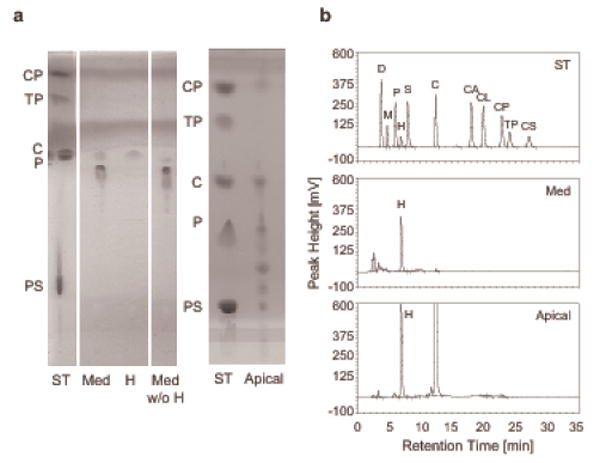Figure 2.

Apical secretions of human normal bronchial epithelial cells contain lipids similar to nasal fluid. Apical secretions of human bronchial epithelial cells (EpiAir-606) accumulated over 7 days in air-liquid interface culture and 2 ml of serum free naïve culture medium (Med), included as negative control, were mixed with the internal standard heptadecanoic acid (H, 20 μg), lipid extracted, and subjected to TLC (a) and rpHPLC/ELSD (b) analysis. (a) ST: standard lipids (25 μg each), CP: cholesteryl palmitate, TP: tripalmitin, C: cholesterol, P: palmitic acid (C16:0), PS: phosphatidyl serine; Med w/o H: for comparison, 2 ml of medium were extracted without prior addition of H; Apical: lipid extracts from 200 μl of apical secretions representing a growth area of 16.8 cm2. On the left TLC plate the solvent fronts appear as homogenously stained lines. (b) rpHPLC/ELSD chromatogram. ST: lipid standards, 5 μg each, D: docosahexaenoic acid, for others see Figure 1b legend; Apical: lipid extract from 300 μl of apical fluid originating from a 16.8 cm2 growth area.
